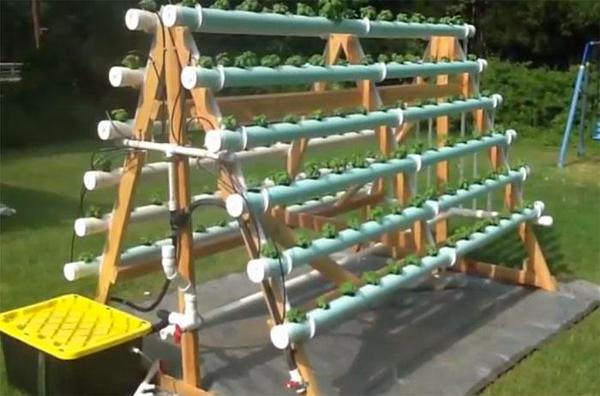Set Up Hydroponic System at Home

How to Set Up a Hydroponic System at Home
Ever dreamed of having a thriving garden but don't have the space or the right soil? Hydroponic gardening is your answer. This soilless method of growing plants is perfect for urban dwellers or anyone looking to start a low-maintenance home hydroponics system. Let's dive into setting up your own indoor hydroponic system with this comprehensive DIY guide.
Understanding Hydroponics
Before we get our hands dirty, let's understand what hydroponics is all about. Simply put, hydroponics is a method of growing plants without soil. Instead, plants are grown in a nutrient-rich water solution. This might sound strange, but it's incredibly effective and efficient.
Why Choose Hydroponics?
Hydroponic gardening has numerous advantages. It uses less water than traditional gardening, plants grow faster, and you can control the environment more precisely. Plus, it's a great solution for urban hydroponics, where space is often limited.
Types of Hydroponic Systems
There are several types of hydroponic systems, but for a DIY hydroponic setup, we'll focus on the Wick System and the Kratky Method. These are simple, low-cost, and perfect for beginners.
Wick System
The Wick System is passive, meaning there are no moving parts. A wick (like a piece of fabric or rope) draws nutrient solution up to the plants. It's simple and low-maintenance, making it a great starting point.
Kratky Method
The Kratky Method is another passive system. Plants are suspended above the nutrient solution, and as they grow, their roots reach down into the water. This method is incredibly simple and perfect for leafy greens and herbs.
Setting Up Your DIY Hydroponic System
Ready to get started? Here's a step-by-step guide to setting up your own indoor hydroponic system.
Materials Needed
- A container for your nutrient solution (a plastic storage bin works well)
- Net pots (plastic pots with slits or holes to allow roots to grow through)
- Growing medium (like rockwool, perlite, or coconut coir)
- pH test kit and pH adjustment kit
- Nutrient solution
- Seeds or seedlings
- Grow light (if you don't have adequate natural light)
Steps to Set Up
Choose Your Location
- Find a spot with plenty of light. A south-facing window is ideal, but if you don't have one, you can use a grow light.
Prepare Your Container
- Clean your container thoroughly. This will be where your nutrient solution goes.
Set Up Your Net Pots
- Fill your net pots with your chosen growing medium. Make sure they fit snugly into the lid of your container.
Plant Your Seeds or Seedlings
- Place your seeds or seedlings into the net pots. If you're using seeds, follow the packet instructions for planting depth.
Add Your Nutrient Solution
- Mix your nutrient solution according to the package instructions. Then, pour it into your container.
Test and Adjust pH
- Use your pH test kit to check the pH of your nutrient solution. Most plants prefer a pH between 5.5 and 6.5. Adjust as needed with your pH adjustment kit.
Place Your Net Pots into the Lid
- Make sure the bottom of the net pots is touching the nutrient solution. In the Kratky Method, you'll leave an air gap between the water and the net pots.
Provide Light
- If you're not using a grow light, place your setup near a sunny window. If you are using a grow light, position it above your plants.
Maintaining Your Home Hydroponics System
Once your system is set up, maintenance is easy. Keep an eye on your water level and top it up as needed. Every couple of weeks, test and adjust the pH and nutrient levels. That's it!
What Plants Thrive in Hydroponics?
Leafy greens like lettuce, spinach, and kale do exceptionally well in hydroponic systems. Herbs like basil, parsley, and mint are also great choices. Want to learn more about suitable plants? Check out this guide from Gardeners.com.
Troubleshooting Common Problems
Even the best-laid plans can go awry. Here are some common issues and how to fix them.
Wilting Plants
If your plants are wilting, it could be due to a lack of water or nutrients. Check your water level and nutrient concentration.
Yellowing Leaves
Yellowing leaves can indicate a nutrient deficiency or a pH imbalance. Test your nutrient solution and adjust as needed.
Algae Growth
Algae can grow in your nutrient solution if it's exposed to light. To prevent this, use an opaque container or cover your container with something light-proof.
Conclusion
Setting up a hydroponic system at home is a rewarding project. It's a great way to grow fresh produce year-round, even if you live in an apartment. With a little patience and care, you'll be enjoying homegrown salads and herbs in no time. So, what are you waiting for? Get started on your home hydroponics adventure today!
FAQs
Is hydroponic gardening expensive?
- Not necessarily. While some systems can be pricey, a simple DIY hydroponic setup can be very affordable.
Can I grow fruits in a hydroponic system?
- Yes, but it's more challenging than growing leafy greens or herbs. Fruit plants require more light, nutrients, and care.
How often should I change the nutrient solution?
- This depends on the size of your system and the plants you're growing. Generally, you should change the solution every 2-3 weeks.
Can I use tap water for my hydroponic system?
- Tap water can be used, but it's often treated with chemicals that can harm your plants. It's best to use filtered or distilled water.
What's the best growing medium for hydroponics?
- There isn't a one-size-fits-all answer. Rockwool, perlite, and coconut coir are all popular choices, each with its own advantages.
0 Response to " Set Up Hydroponic System at Home"
Post a Comment